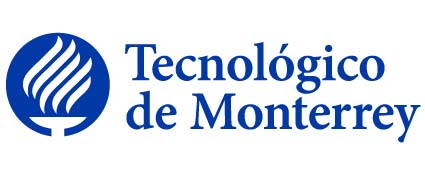
|
Curso con proyecto. |
|||||
|
|||||
Disciplina asociada:Diseño Industrial |
|||||
Escuela:
Arquitectura, Arte y Diseño
|
|||||
Departamento Académico:
Diseño
|
|||||
Programas académicos: |
|||||
Requisitos:(Haber Aprobado DL1002) |
|||||
Equivalencia:AR99826 ; AR00826 ; PV1004 |
|||||
Intención del curso en el contexto general del plan de estudios: |
|||||
|
Es un curso de nivel básico para arquitectura, diseño industrial y arte digital que tiene la intención de que el alumno aplique conceptos y técnicas formales tridimensionales. El alumno aplicará métodos básicos del diseño y de geometría para el análisis y síntesis de las formas. Como conocimientos previos se requieren fundamentos de diseño, de geometría y técnicas básicas para la creación de modelos y maquetas. Como resultado del aprendizaje, el alumno desarrolla y representa modelos y formas tridimensionales aplicando fundamentos teóricos de estética y percepción. Asimismo el alumno desarrolla su habilidad representativa basada en teorías de la forma. |
|||||
Objetivo general de la Unidad de Formación: |
|||||
|
Al finalizar este curso el alumno será capaz de aplicar el lenguaje espacial, descubriendo sus posibilidades creativas dentro de este. Desarrollar sus habilidades compositivas tridimensionales en diversos materiales y técnicas con una autodisciplina de trabajo exacto y limpio. Conocer y aplicar una nomenclatura propia del diseño, la percepción y la estética. |
|||||
Técnica didáctica sugerida: |
|||||
| No especificado | |||||
Bibliografía sugerida: |
|||||
|
LIBROS DE TEXTO: * Hannah, Gail Greet., Elements of design : Rowena Reed Kostellow and the structure of visual relationships, nyu : New York : Princeton Architectural Press, 2005., eng, 1568983298 (rústica : papel alcalino), 9781568983295 * Dondis, Donis A, La organización visual, Gustavo Gili, 1995, * Wong, Wucius, Fundamentos de Diseño, Gustavo Gili, 1995, español, LIBROS DE CONSULTA: * Arnheim, Rudolf., Arte y percepción visual : psicología de la visión creadora, Argentina : Buenos Aires : Eudeba, c2007., spa, 9502300939 * Elam, Kimberly, Geometry of design : studies in proportion and composition, Design briefs, New York : New York : Princeton Architectural Press, eng, 1568982496 (rústica), 9781568982496 (rústica) * Grillo, Paul Jacques., Form, function, and design, New York : New York : Dover Publications, 2003., eng, 0486201821, 9780486201825 * Gerstner, Karl, Las formas del color, Hermann Blume, 1988, * Gillam Scott, Robert, Fundamentos del diseño, Víctor Lerú, 1990, |
|||||
Perfil del Profesor: |
|||||
|
(500404)Maestría en Diseño Industrial ; (500701)Maestría en Arte/Estudios de Arte ; (040201)Maestría en Arquitectura ; (500404)Doctorado en Diseño Industrial ; (500701)Doctorado en Arte/Estudios de Arte ; (040201)Doctorado en Arquitectura CIP: 500404, 500701, 040201 Experiencia recomendada: Experiencia docente en dirigir trabajo creativo y los fundamentos del diseño. |
|||||
|
Course with project. |
|||||
|
|||||
Discipline:Industrial Design |
|||||
School:
Architecture, Art and Design
|
|||||
Academic Department:
Design
|
|||||
Programs: |
|||||
Prerequisites:( DL1002) |
|||||
Equivalences:AR99826 ; AR00826 ; PV1004 |
|||||
Course intention within the general study plan context: |
|||||
|
This is a basic course for the Architecture, Industrial Design and Digital Art majors in which students will apply three-dimensional formal concepts and techniques. Students will use basic design methods and geometry to analyze and synthesize the forms. This course requires prior knowledge of basic design, geometry and techniques for creating models and mockups. As a learning outcome students will be able to develop and depict three-dimensional models and forms by applying the fundamental theory of aesthetics and perception. Students will also develop their depictive skills based on formal theories. |
|||||
Course objective: |
|||||
|
Upon completion of this course, students will be able to apply spatial language, discovering its creative possibilities; develop their three-dimensional composition skills with different materials and techniques, employing a self-discipline of clean and precise work; learn and apply a nomenclature specific to design, perception, and aesthetics. |
|||||
Teaching and learning tecniques: |
|||||
| Not Specified | |||||
Suggested Bibliography: |
|||||
|
TEXT BOOKS: * Hannah, Gail Greet., Elements of design : Rowena Reed Kostellow and the structure of visual relationships, nyu : New York : Princeton Architectural Press, 2005., eng, 1568983298 (rústica : papel alcalino), 9781568983295 * Dondis, Donis A, La organización visual, Gustavo Gili, 1995, * Wong, Wucius, Fundamentos de Diseño, Gustavo Gili, 1995, español, BOOKS FOR CONSULTATION: * Arnheim, Rudolf., Arte y percepción visual : psicología de la visión creadora, Argentina : Buenos Aires : Eudeba, c2007., spa, 9502300939 * Elam, Kimberly, Geometry of design : studies in proportion and composition, Design briefs, New York : New York : Princeton Architectural Press, eng, 1568982496 (rústica), 9781568982496 (rústica) * Grillo, Paul Jacques., Form, function, and design, New York : New York : Dover Publications, 2003., eng, 0486201821, 9780486201825 * Gerstner, Karl, Las formas del color, Hermann Blume, 1988, * Gillam Scott, Robert, Fundamentos del diseño, Víctor Lerú, 1990, |
|||||
Academic credentials required to teach the course: |
|||||
|
(500404)Master Degree in Industrial Design and (500701)Master Degree in Art/Art Studies and (040201)Master Degree in Architecture and (500404)Doctoral Degree in Industrial Design and (500701)Doctoral Degree in Art/Art Studies and (040201)Doctoral Degree in Architecture CIP: 500404, 500701, 040201 |
|||||